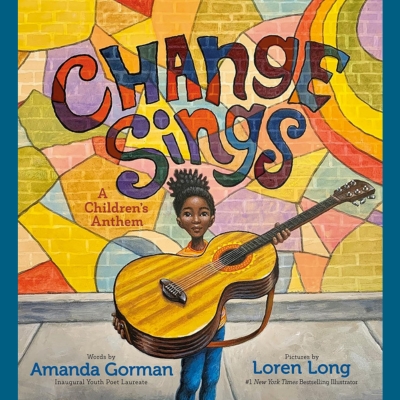Look, it's me!
For wheelchair users, the impractical illustrations may feel isolating

Review by: Chloe R.

For wheelchair users, the impractical illustrations may feel isolating
Less of a story and more of a poem, Change Sings follows a young Black girl as she makes friends who work together to influence change in their community. The characters are shown caring for the environment, helping neighbours, repairing buildings, and more. The book encourages readers to consider the ways they can make a positive impact in their community.
I loved the diversity of characters in this book, particularly featuring a Black girl as the main character and leader of the group. The book also features a Jewish boy wearing a kippah, a Black boy, and an Asian girl who uses a wheelchair. However, in terms of disability representation, it appears the illustrator has not considered the practicalities that come with using a wheelchair. Each character in the book plays a different musical instrument, and the wheelchair user is depicted as the drum player. Balancing the large drum on her legs, the character holds a drum mallet in each hand, leaving her with no hands free to move her manual wheelchair. It would have been great to see the needs of this character reflected in the illustration by showing her playing a one-handed instrument, an adaptive instrument, or having one of the other characters push her wheelchair as she plays.
For young Australian readers, there are some US-centric references they may not immediately connect with. For example, references to the colours of the USA flag and Martin Luther King Jr.’s famous “I have a dream” speech. However, these references may open an opportunity to discuss American history.
Overall, I recommend this book to children and families due to the messaging of influencing and actioning positive community change. However, for wheelchair users, the impractical illustrations may feel isolating as it does not reflect their experience.


